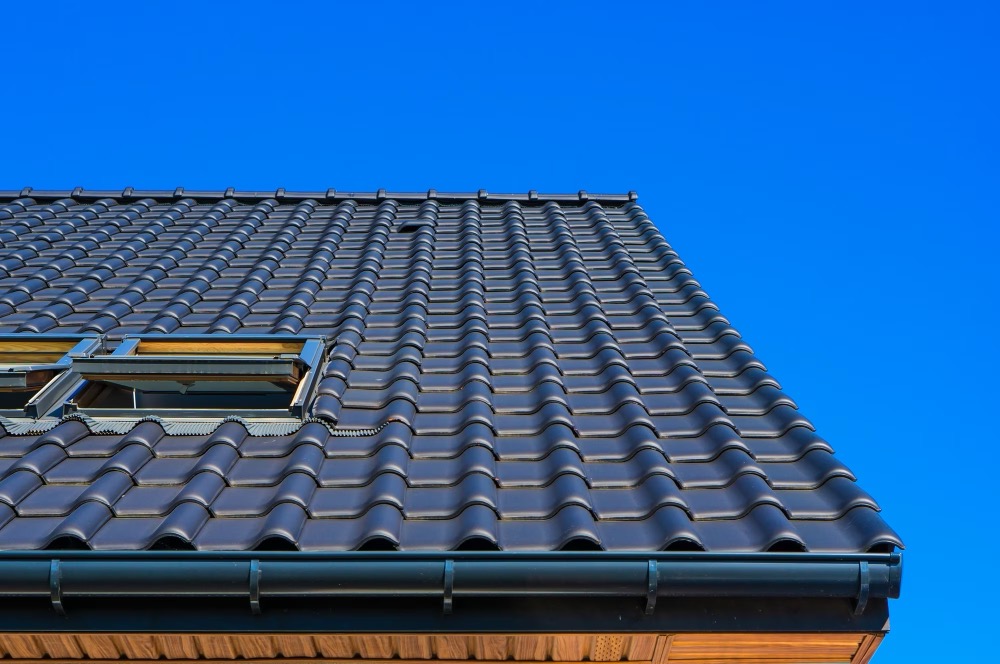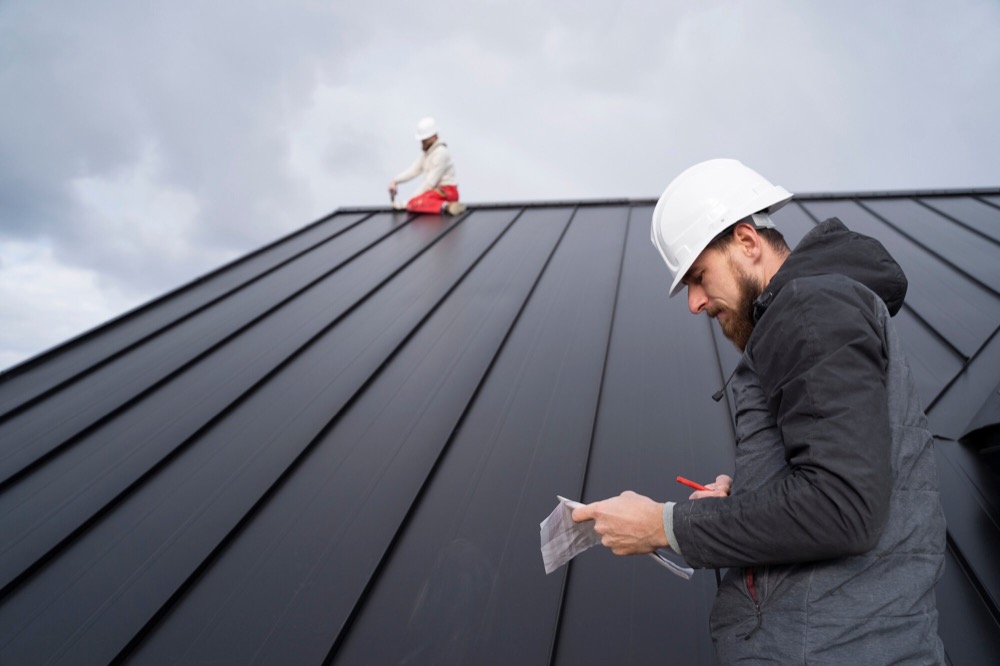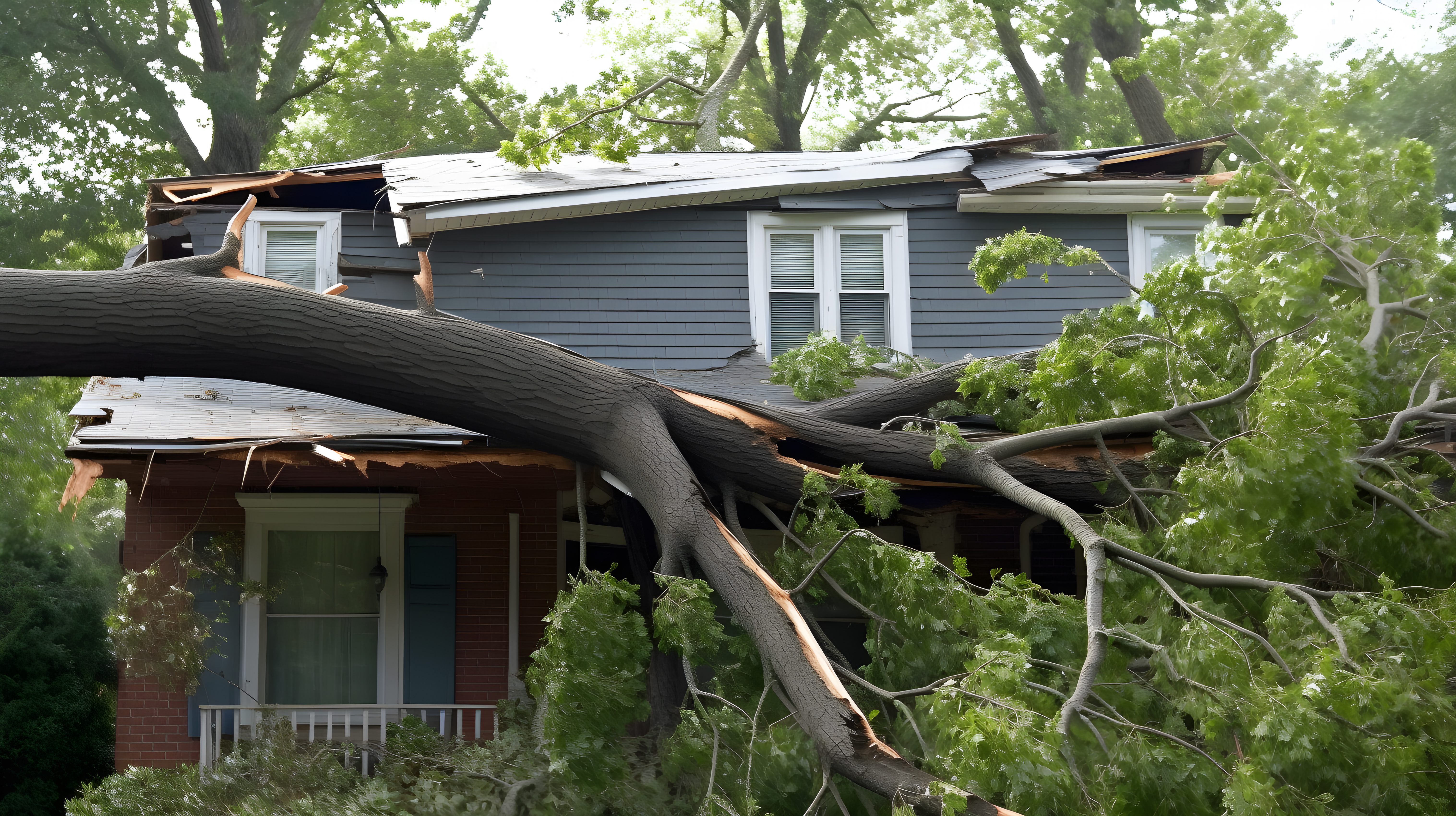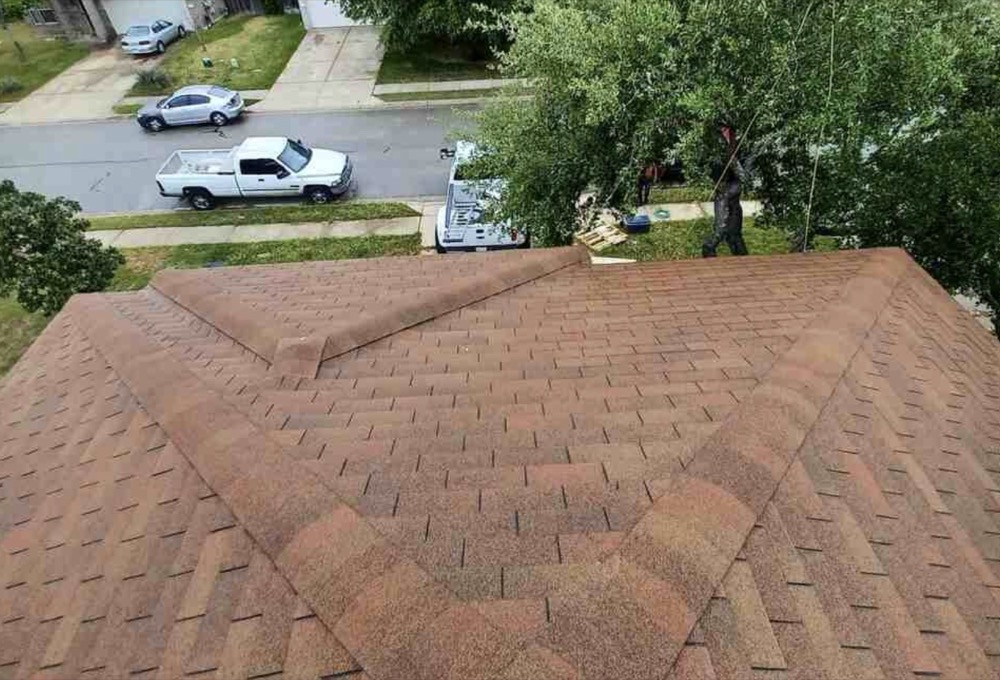Roof Inspections: What They Are and Why You Need One
Intro
As a homeowner, one of the most important aspects of maintaining your property is taking care of your roof. Regular roof inspections are crucial to ensuring the integrity of your home and avoiding costly repairs down the line. In this blog post, we will delve into what roof inspections are, why you need one, and what to expect during the process.
Understanding the Basics of Roof Inspections
At its core, a roof inspection involves a comprehensive review performed by an experienced roofing professional. This process is not simply a cursory glance at your roof; it is an in-depth examination aimed at evaluating the current state of your roof and identifying any signs of deterioration or damage. The inspector will meticulously assess every component of your roofing system, including the shingles, flashing, gutters, and downspouts, as well as the structural integrity of the roof itself.
The procedure begins with a visual inspection from both the ground and the roof, allowing the inspector to spot any visible issues such as broken or missing shingles, wear and tear around roof penetrations, and improper flashing. Following the exterior evaluation, the inspection often extends to the interior areas of your home, particularly the attic. Here, the inspector looks for evidence of water intrusion, insulation problems, and adequate ventilation, all of which are critical to maintaining a healthy roof system.
An essential aspect of the roof inspection is the identification of potential vulnerabilities that could lead to future problems. For instance, areas where water might accumulate or where the roof is subjected to higher wind uplift forces are given special attention. The goal is to catch minor issues before they evolve into significant, costly repairs.
This detailed examination not only provides peace of mind but also serves as a preventative measure to extend the lifespan of your roof. By understanding the condition of your roof, you can make informed decisions regarding maintenance and repairs, ultimately ensuring the safety and protection of your home. Roof inspections are a proactive approach to home maintenance, emphasizing the importance of early detection in preserving the overall health of your roofing system.
The Importance of Regular Roof Inspections
Engaging in regular roof inspections is not just about identifying current issues; it’s about safeguarding the future of your home. These inspections play a critical role in uncovering minor problems that, left unchecked, could spiral into more significant, more expensive repairs. An overlooked crack or missing shingle today could lead to substantial water damage or structural issues tomorrow. The process of regularly examining your roof ensures that small concerns are addressed promptly, thereby maintaining the integrity and functionality of your roofing system.
Furthermore, environmental factors unique to your locale, such as heavy rains, high winds, or extreme temperatures, can affect the condition of your roof. Regular inspections help in assessing the impact of these environmental stressors and in implementing necessary measures to combat them. This proactive approach aids in extending the life of your roof, ultimately providing long-term savings by delaying the need for a complete roof replacement.
Additionally, routine inspections can play a pivotal role in your home’s energy efficiency. Issues like inadequate insulation or poor ventilation discovered during an inspection can lead to higher energy bills. Addressing these problems not only enhances the comfort of your living space but also contributes to energy conservation and cost savings.
It’s also worth noting that regular roof inspections can have implications for home insurance. Some insurers may require periodic inspections to maintain coverage, particularly in regions prone to severe weather. By staying ahead with scheduled inspections, homeowners can ensure compliance with insurance requirements, potentially avoiding complications should a claim need to be made.
In essence, regular roof inspections are an indispensable aspect of responsible homeownership. They not only preempt costly repairs and extend the roof’s lifespan but also contribute to the overall safety, efficiency, and insurance compliance of your property. Engaging a professional for these inspections guarantees that your roof remains in optimal condition, ready to protect your home through all seasons.
Identifying Common Roofing Problems
During a meticulous roof inspection, experienced contractors are on the lookout for a variety of prevalent issues that can affect the overall health and longevity of your roofing system. One of the primary concerns is the presence of missing or damaged shingles, which can expose the roof to further damage by water and pests. Leaks are another critical issue, often indicated by water stains on ceilings or walls inside the home, which if not addressed promptly, can lead to mold growth and structural damage.
Mold growth itself is a significant problem, not only because it indicates an existing moisture issue but also due to its potential health risks and the difficulty of removal once established. Inspectors also check for signs of water damage, such as rotting wood in the attic or around the roof structure, which can compromise the integrity of the roof and the safety of those within the home.
Additionally, improper flashing around chimneys, vents, and skylights can lead to leaks and water damage. Flashing is crucial for directing water away from these vulnerable areas, and if not installed correctly, it can fail to protect the home as intended. Clogged or damaged gutters and downspouts are also a concern, as they can cause water to back up and damage the roof, siding, and foundation of the home.
Lastly, inspectors assess the roof for inadequate ventilation, which can lead to heat and moisture accumulation in the attic. This not only increases the risk of mold growth but can also cause the shingles to deteriorate prematurely. Each of these common problems, if identified early through a comprehensive roof inspection, can be addressed to prevent more serious and costly issues down the road.
What to Expect During a Roof Inspection
Embarking on a roof inspection process begins with the contractor conducting a thorough examination of the exterior aspects of your roof. This includes a meticulous look at the shingles, gutters, flashing, and chimney to identify any signs of wear, damage, or potential failure. The inspection doesn't stop at what's immediately visible from the outside; the contractor will also venture into the attic space. This interior inspection is critical for uncovering hidden issues such as leaks that haven't yet penetrated to visible interior spaces, compromised insulation, or inadequate ventilation—all of which could have serious implications for the health of your roof and home.
The contractor's approach is methodical, ensuring no stone is left unturned. They may use tools such as drones or special cameras to access hard-to-reach places or to get a closer look at certain areas without risking damage to your roof by walking on it. Once the inspection is completed, you can expect to receive a comprehensive report. This document will detail the inspector's findings, highlighting areas of concern and recommending necessary repairs or maintenance to address any issues. This report is instrumental in planning the next steps to take for maintaining or repairing your roof.
It's important to note that while the contractor is on your property, they may take photographs or notes as part of their assessment process. These visuals can be especially useful for explaining complex roofing issues or for documenting the condition of the roof for insurance purposes. By understanding what to expect during a roof inspection, homeowners can better prepare themselves and their homes for this vital aspect of home maintenance, ensuring a smooth and efficient inspection process.
How to Prepare Your Home for a Roof Inspection
Preparing your home for a roof inspection is a straightforward process that can significantly facilitate the inspection and ensure a comprehensive assessment. Start by ensuring clear access to your home’s roof. This may involve trimming back tree branches that could impede the inspector's access or obstruct their view of the roof. Clearing any debris from the gutters and downspouts is also beneficial, as it allows the inspector to evaluate these components more effectively.
In addition to exterior preparations, focus on the interior access points that the inspector might need to use. This includes ensuring that the entrance to your attic is easily accessible. Remove any items that may block the path or make it difficult for the inspector to move around freely inside the attic. This space is crucial for assessing the underside of the roof and checking for signs of leaks, inadequate insulation, or poor ventilation.
If you have pets, consider keeping them in a secure area away from the inspection zones to prevent distractions or safety concerns for both the pets and the inspector. Similarly, if there are any areas of the roof or attic that you have safety concerns about, make a note to inform the inspector beforehand. This allows them to prepare accordingly and bring any necessary safety equipment.
Lastly, gather any documentation related to previous roof work, warranties, or past inspection reports. Having this information on hand can be invaluable to the inspector, providing them with a history of the roof that may inform their inspection process. It can also help them to identify recurring issues or assess the effectiveness of previous repairs.
By following these steps, you can help ensure that the roof inspection process is as thorough and efficient as possible, leading to more accurate findings and recommendations.
Choosing the Right Roofing Contractor for Inspections
Selecting the ideal roofing contractor for an inspection is an essential step in ensuring your roof's longevity and your home's safety. Start by researching local contractors with a strong presence in your community, particularly those with expertise in dealing with the specific roofing materials and challenges common in your area. Experience matters, as seasoned inspectors are more adept at identifying subtle signs of wear and potential issues that may be overlooked by less experienced eyes.
Certification and insurance are non-negotiable criteria. A certified roofing contractor not only adheres to industry standards but also demonstrates a commitment to ongoing professional development. Insurance, on the other hand, protects you from liability in the event of accidental damage or injury occurring during the inspection.
Transparency and communication are key indicators of a reputable contractor. During initial consultations, gauge their willingness to answer your questions and explain the inspection process in detail. They should be able to provide a clear outline of what the inspection will cover and what kind of report you should expect. Additionally, request to see examples of previous inspection reports to assess their thoroughness and clarity.
References and reviews can provide insights into past customers' experiences, highlighting the contractor's reliability, professionalism, and quality of work. Pay attention to feedback regarding their punctuality, attention to detail, and responsiveness to follow-up questions or concerns.
Finally, while cost is an important factor, it should not be the sole determinant in your decision. The lowest quote may not always translate to the best value, especially if it comes at the expense of thoroughness and expertise. Instead, focus on finding a balance between reasonable pricing and the assurance of a comprehensive, professional roof inspection.
By carefully vetting potential contractors against these criteria, you can confidently select a roofing professional who will provide a detailed, accurate assessment of your roof's condition.
Understanding Your Roof Inspection Report
Once the inspection of your roof is finalized, you will be handed a comprehensive report by the contractor that meticulously documents their observations and findings. This report is a critical document that highlights any defects, damages, or areas of concern that were identified during the inspection. It is meticulously structured to offer you a clear understanding of the current state of your roof, pinpointing specific problems such as missing shingles, leaks, potential water damage, and areas susceptible to future issues.
The report will categorize findings, often prioritizing them based on urgency – from immediate repair needs to observations that should be monitored over time. Each item listed will usually be accompanied by a description of the issue, its location, and, in many instances, photographic evidence to provide visual context. This clarity is vital for homeowners to grasp the exact nature and extent of any roofing problems.
Beyond identifying problems, the report will also include recommendations for repairs or maintenance work that should be carried out to rectify identified issues. These recommendations are invaluable for planning the next steps in the maintenance or repair process. They guide you on what actions to take to prevent minor problems from escalating into major concerns that could significantly impact the roof's integrity and longevity.
It's crucial to engage with the contents of the inspection report actively. If certain terms or recommendations aren't immediately clear, don't hesitate to reach out to the roofing contractor for clarification. A thorough understanding of this report empowers you to make informed decisions regarding your roof's maintenance, ensuring that your home remains protected against the elements. Additionally, this report can serve as a record of the roof's condition, which could be beneficial for insurance purposes or future sale considerations.
The Cost of Roof Inspections and Why They're Worth It
The expense of a roof inspection might initially seem like an unnecessary outlay, especially if there are no visible signs of damage to your roof. However, the true value of this service lies in its ability to preempt future problems, potentially saving homeowners thousands of dollars in repair costs. The pricing for roof inspections can vary widely, influenced by factors such as the roof's size, its slope, and the type of inspection being performed. Some roofing companies may offer free inspections as part of a repair service quote, while independent inspectors might charge a flat fee or a rate based on the roof’s square footage.
Investing in a professional roof inspection can uncover hidden issues like minor leaks, areas of wear, and vulnerabilities that might not yet be visible but could lead to significant damage under the right conditions. Early detection of these issues means that they can often be resolved more simply and cost-effectively, avoiding the escalated costs associated with major repairs or even premature roof replacement.
Moreover, the insights gained from a thorough inspection extend beyond immediate repairs. They can guide homeowners in maintaining their roofs more effectively, thereby prolonging the roof’s lifespan. This proactive approach to roof care not only enhances the home’s safety and structural integrity but also contributes to its overall value.
Another critical consideration is the impact of roof condition on homeowners insurance. Insurers may offer better terms for homes that are well-maintained, as these represent a lower risk. In some cases, the cost of an inspection could be offset by the insurance savings it enables.
In essence, while the upfront cost of a roof inspection is not negligible, the financial benefits it offers through prevention, maintenance, and the potential for insurance savings make it a wise investment for any homeowner aiming to protect and preserve their property.
What to Do After Your Roof Inspection
Once you've received a detailed roof inspection report, your next steps should focus on addressing the identified concerns with diligence and promptness. Review the report carefully, paying special attention to any areas marked as urgent or requiring immediate attention. It's advisable to prioritize these issues to prevent any potential damage from escalating further.
Initiating a conversation with your roofing contractor about the findings is a critical next step. Discuss the recommended repairs or maintenance actions outlined in the report. This dialogue is an opportunity to ask questions, clarify any uncertainties, and understand the implications of the findings. Your contractor can provide insight into the severity of issues, the estimated timeline for repairs, and the potential impact on your roof's longevity if left unaddressed.
Once you have a clear understanding of the necessary repairs, request quotes from several reputable roofing professionals. Comparing quotes can help ensure that you receive fair pricing and quality service for the work needed. However, remember that the cheapest option may not always be the best choice. Consider the contractor's experience, reputation, and the quality of materials they plan to use.
After selecting a contractor, schedule the repairs at the earliest convenience. Delaying repairs can lead to further damage, potentially increasing the cost and complexity of future repairs. If the inspection report indicated non-urgent issues, plan a maintenance schedule to address these over time. Regular maintenance can prevent minor issues from becoming major problems, safeguarding your roof's integrity.
Finally, keep the inspection report for your records. This document can be valuable for future reference, insurance purposes, or if you decide to sell your home. It provides a documented history of your roof's condition and the proactive steps taken to maintain it, which can be reassuring to potential buyers and beneficial in insurance assessments.
DIY vs. Professional Roof Inspections
Undertaking a roof inspection can seem like a straightforward task you might be tempted to do yourself. After all, spotting major issues like missing shingles or large leaks could be within the capability of most homeowners. However, the subtleties and nuances of roofing issues often require a more expert eye to identify and correctly diagnose. A professional roofing contractor brings a depth of knowledge and an array of specialized tools that go beyond the surface-level inspection a homeowner can perform.
Professionals are trained to spot less obvious signs of damage or wear that might not be immediately apparent. For instance, they can identify issues related to improper ventilation, subtle signs of water damage, or the early stages of mold and mildew formation that could lead to bigger problems if not addressed. They also have the expertise to assess the structural integrity of your roof, something that is crucial for long-term maintenance and safety.
Furthermore, professional inspectors use advanced tools and technology, such as drones and thermal imaging cameras, to inspect hard-to-reach areas or to assess the roof without causing further damage by walking on it. This equipment enables a more comprehensive and detailed inspection than what a homeowner can achieve with just a ladder and a pair of binoculars.
Choosing a professional inspection over a DIY approach also means you receive a detailed report of the roof's condition, complete with recommendations for any necessary repairs or maintenance. This document is invaluable for planning future work and can serve as a record of your roof’s condition for insurance purposes or if you decide to sell your home.
In essence, while homeowners can conduct preliminary checks themselves, relying on a professional for a thorough roof inspection ensures a level of detail and expertise that far surpasses what the untrained eye can see. This not only helps in accurately identifying and addressing issues but also in maintaining the overall health and longevity of your roof.
‹ Back









